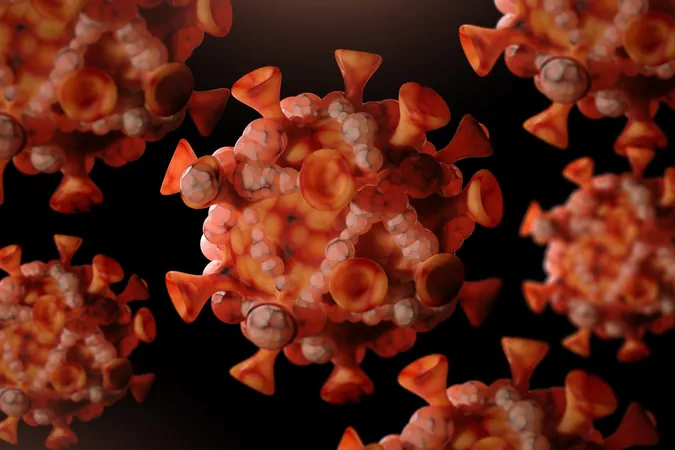
40 Days with No Aid: The Dire Situation in Northern Gaza
2024-11-20
Author: Kai
Humanitarian Crisis Unfolding
According to alarming reports from the United Nations, the humanitarian situation in northern Gaza has reached a critical point, as "diminishing conditions for survival" plague the communities besieged by Israeli forces. It has been 40 days since any significant aid has reached the areas most affected, including Beit Hanoun, Beit Lahia, and Jabalia, where approximately 65,000 to 75,000 people reside.
Efforts to Deliver Aid
Efforts to deliver essential supplies to these regions have either been denied or severely hindered, with bakeries and kitchens shutting down due to the lack of resources. The UN's recent assessments indicate a looming threat of famine, emphasizing the urgent need for immediate humanitarian assistance.
Military Operations and Civilian Impact
In the midst of this crisis, the Israeli military maintains that its offensive is aimed at targeting Hamas fighters and insists it is facilitating civilian evacuations and medical supply deliveries. Nonetheless, the consequences of ongoing military operations have led to significant loss of life—hundreds dead and between 100,000 to 130,000 individuals displaced into Gaza City. Here, the UN warns that access to shelters, clean water, and healthcare is alarmingly insufficient.
International Response
The international community has taken note of the escalating situation. The United States recently vetoed a draft resolution in the UN Security Council that called for an immediate ceasefire between Israel and Hamas, despite the support of the other 14 Security Council members. The U.S. justified its veto by highlighting the necessity of addressing the release of hostages held by Hamas as part of any ceasefire agreement.
UN Humanitarian Missions
UN agencies had slated 31 humanitarian missions to northern Gaza from November 1 to November 18, but Israeli authorities rejected 27 missions outright. The four missions that did proceed faced severe restrictions, limiting their ability to deliver much-needed aid. UN spokesperson Stéphane Dujarric stated that the situation is dire, with the IPC Famine Review Committee repeatedly warning that parts of northern Gaza face an imminent risk of famine, necessitating immediate action.
Healthcare System Under Strain
The dire lack of access to basic amenities is further compounded by shortages in medical supplies and fuel, crippling the already struggling healthcare system. Access to hospitals remains precarious, with only three facilities operating at reduced capacity. Recently, a World Health Organization-led initiative was able to deliver fuel to Kamal Adwan Hospital in Beit Lahia and transfer several patients to al-Shifa hospital in Gaza City, but critical food supplies were confiscated at an Israeli military checkpoint, adding to the crisis.
Voices from the Ground
Dr. Hussam Abu Safiya, director of Kamal Adwan Hospital, expressed growing concern, stating that the medical facility is providing only the "minimum level of healthcare" for its 85 patients. There is a mounting need for children's food and infant formula, particularly as cases of malnutrition surge—17 children exhibiting malnutrition symptoms have been admitted to the emergency room recently.
Ongoing Struggles for Aid
While the situation remains fluid, the Israeli military's humanitarian arm, Cogat, reported that 472 aid lorries had crossed into northern Gaza as of November 17, although it remains unclear how much of that aid has reached those in urgent need. The struggle for survival continues as Gaza faces one of the most severe humanitarian crises in recent history, with advocacy for unfettered humanitarian access becoming an urgent call to action for the international community.
Call to Action
Stay tuned for developments in this heartbreaking situation as the world watches and waits for a resolution.





 Brasil (PT)
Brasil (PT)
 Canada (EN)
Canada (EN)
 Chile (ES)
Chile (ES)
 España (ES)
España (ES)
 France (FR)
France (FR)
 Hong Kong (EN)
Hong Kong (EN)
 Italia (IT)
Italia (IT)
 日本 (JA)
日本 (JA)
 Magyarország (HU)
Magyarország (HU)
 Norge (NO)
Norge (NO)
 Polska (PL)
Polska (PL)
 Schweiz (DE)
Schweiz (DE)
 Singapore (EN)
Singapore (EN)
 Sverige (SV)
Sverige (SV)
 Suomi (FI)
Suomi (FI)
 Türkiye (TR)
Türkiye (TR)